Ventilation in the bathroom and toilet
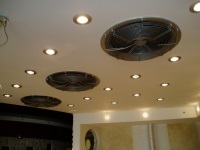
We are used to watching the quality of the food we eat and the water we drink. But few people pay enough attention to the air we breathe. Yet clean air is just as important to our bodies as water and food. With the ever-worsening ecology and ubiquitous pollution of large cities simply ventilating the premises will not do. In these conditions, the best solution is to install ventilation.
Clean air and the absence in it of harmful impurities needed to prevent headaches, drowsiness, dizziness, and the prevention of allergic reactions.
The need for ventilation in the bathroom
In the bathroom, ventilation is important no less than in other rooms, and perhaps even more. The fact that the bathroom is constantly accumulating steam and humid air, and it is the humidity that contributes most to mold.

Mold can settle in the lungs and lead to serious respiratory diseases, provoking the development of asthma, allergies, etc. It is not only harmful to the human body, but also gradually destroys all objects and materials, but which are formed, up to the concrete. Therefore, the installation of a properly functioning ventilation system is not a whim, but a necessity.
Requirements and regulations
All requirements and standards for indoor ventilation are prescribed in the section "Heating, ventilation and air conditioning" SNiP 41-01-2003.
According to this document, the premises require artificial ventilation if, due to contaminated air or natural conditions, the required sanitary norms are not met due to the lack of natural ventilation or if simple ventilation is insufficient.
The permissible levels of dust and hazardous substances in the air are prescribed in the sanitary and epidemiological regulations. Thus, as far as carbon dioxide is concerned, the maximum allowable amount of carbon dioxide in rural areas is 650 mg/m3, in small towns - 800 mg/m3, and in large cities - 1,000 mg/m3. At the same time, the norm of air exchange per person is 28 m3 /h. Excess carbon dioxide can cause shortness of breath, dry cough, runny nose and other adverse effects on the body.

Types of ventilation systems
Most often, the types of ventilation systems are distinguished depending on its purpose. Thus, there are distinguished:
- Exhaust ventilationExhaust ventilation, which removes exhaust air through exhaust ducts. Such ventilation is convenient when it is possible to combine natural and mechanical ventilation.
- Fresh air supply ventilationSupply ventilation, which creates additional pressure by displacing the exhaust air with the fresh air.
- Mixed ventilationwhich combines both principles of operation.
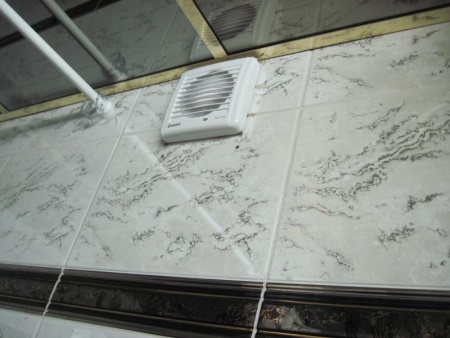
In addition, there is ventilation is often divided into natural and forced ventilation.
- Natural ventilation - is the ventilation that was originally designed and installed when the room was built. The most typical ventilation scheme for bathrooms and toilets in apartments and apartment buildings is a scheme in which the bathroom is connected to the toilet with a ventilation window, and from the toilet air is diverted to the general ventilation duct of the house.
- Forced ventilation - is ventilation that is installed by the landlord as desired and involves the use of an exhaust hood or fan.
Functional Testing
Checking that your ventilation system is working properly is much easier than you think. You won't need any additional tools. Simply light a match or a small piece of paper and bring it close to the vent. If the flame fluctuates, the vent is working.
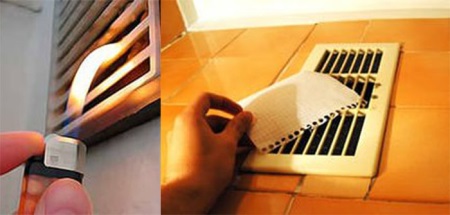
Another way to check the ventilation is to make a draught in the room by opening the window and bathroom door, and put a piece of thin paper or, for example, a napkin to the ventilation grille. The napkin should also either stick to the grate, if the ventilation system has normal air intake, or it should be blown off the grate by the air flow from the ventilation duct. If the cloth just falls down, it is time to change the ventilation.
Try to solve the problem of poor ventilation by widening the gap between the door and the floor. This will create the necessary draft for the ventilation to work properly. You can also try installing an extra ventilation grate in the door or wall.
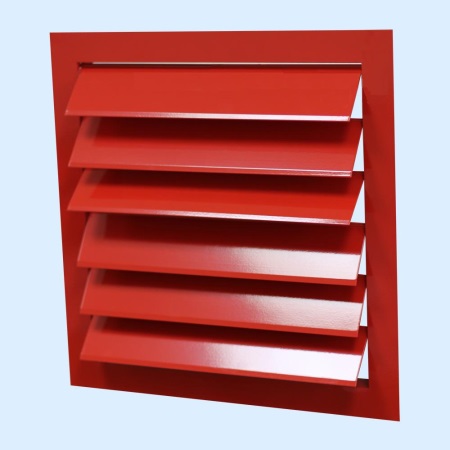
How the ventilation system works in the bathroom and toilet
In private homes, separate ventilation ducts are usually designed for each room separately: for the kitchen, bathroom and toilet. With the help of an extractor, the exhaust air is led to the roof through such ducts.
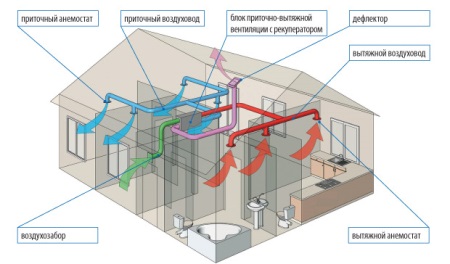
In apartment buildings, however, a typical ventilation system is usually used in which all ventilation ducts are combined into one common duct that exits to the roof. Ventilation is based on the draft arising from temperature differences.
In the case of forced ventilation, special ventilation systems are installed with sensing elements that open and close the dampers as needed.
Causes of poor ventilation system performance
There can be a number of reasons why your ventilation system may start to malfunction:
- Errors in the planning of the whole building ventilation system: both in making the calculations and directly during installation.
- Debris buildup in the ventilation ducts.
- Damage to the ventilation system of neighboring apartments, e.g. during renovation, which caused a disturbance in the air flow in the ventilation.
Before installing a new ventilation system, try to deal with the old one. Perhaps your problem can be solved by simply cleaning the air duct.
Fan Requirements
As a rule, when installing a fan, you should pay attention to the following parameters:
- Low noise level when the fan is running (no more than 30 dB);
- Sufficient distance from electric heaters;
- High quality insulation of electrical wires in conditions of high humidity;
- The capacity of the fan used must be chosen taking into account the size of the room and the number of people living in the apartment;
- A complete change of indoor air should take place at least five times an hour.
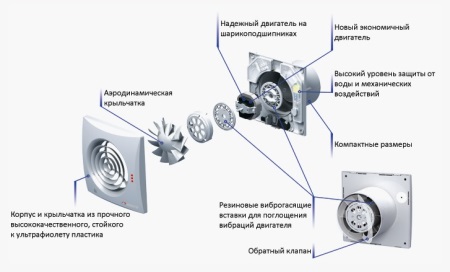
Types of fans
The main types of fans:
- connected to the switch and work when the light in the bathroom or toilet is on;
- equipped with special sensors, and turn on automatically when the permissible level of humidity in the room is exceeded;
- equipped with a timer, in which you can set the time of its operation.
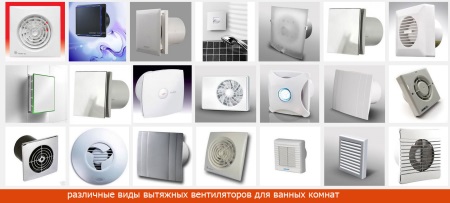
In addition, fans differ in design features:
- Axial - The simplest model. They are also called propeller fans.
- Radial - Provide high pressure in the room. They can have straight, backward deflected, backward curved and forward curved blades.
- Diagonal - Mixture of axial and radial fans.
- Diagonal fans can handle large volumes of air because the air flows around the perimeter of the impeller.

Read our article about bathroom fans.
How to make ventilation in the bathroom with your own hands
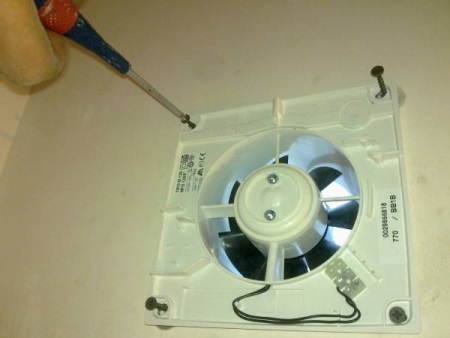
It is quite possible to install the ventilation yourself. Of course, it is better to do this while the house is still under construction, but it is not so difficult to re-do the ventilation.
- First of all, check the air duct. It will need to be cleaned of debris. If you can't connect the new vent to the existing duct, you will need to purchase several meters of new air duct and take them out to the old duct.
- Determine the location where your fan will be placed. The best location for the fan is considered to be the wall opposite the door.
- Install the fan in the opening of the ventilation duct, expanding the opening to the desired diameter if necessary.
- Carefully route the electrical wires from the ventilator so that they are minimally exposed to moisture and are not visible.
- Connect the fan to the switch.
- Fasten the fan and its grille with either liquid nails or self-tapping screws.
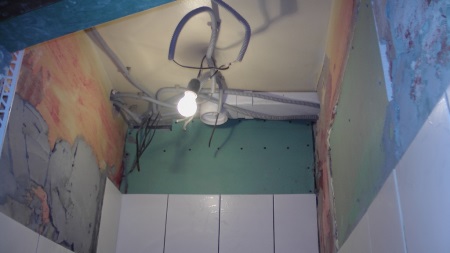
To reduce the noise produced by the fan, install an additional layer of sealant between the fan and the wall when installing the fan.
Ventilation options: through the bathroom to the toilet or through the toilet to the bathroom
As a rule, the air duct is located in the toilet. There are two ways to arrange ventilation between the toilet and bathroom: either run a separate ventilation pipe from the bathroom to the air duct in the ceiling space, for example, or install two separate fans: one in the wall between the bathroom and the toilet, and one in the toilet, to the air duct.





We often have a bad smell in the bathroom and toilet, probably from the pipes. I will install ventilation, it is unbearable to live like this.